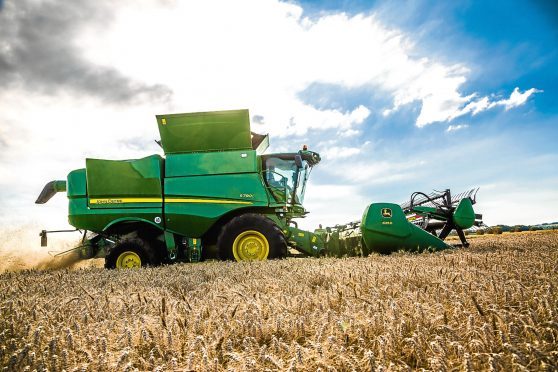Farm machinery manufacturer John Deere has unveiled details of a new range of automated combines being launched to the market next year.
The company said the four new S700 Series rotary combine models – the S770, S780, S785 and S790 – offered farmers significant improvements in ‘smart’ technology, operator comfort and data management.
The S700 Series builds on the proven field performance of the S600 Series by incorporating the latest in automated harvesting technology.
John Deere said many of the changes made it easier for the operator by allowing the machine to carry out the necessary adjustments automatically, on the go.
“These new S700 Series combines are the result of enhancements to our previous models that optimise and automate harvesting operations for both coarse and small grains,” said John Deere’s European combines product manager Carsten Heftrig.
“We’ve increased the overall intelligence of these combines by automating more adjustments and calibration tasks. We’ve also improved the lifetime durability and productivity of our front-end equipment to create a high performance harvesting solution unlike any other on the market today.”
A key element of the new combines is Integrated Combine Adjustment (ICA2) which is part of the company’s new Combine Advisor package. Once the combine’s existing ICA system has optimised machine settings such as throughput, grain quality, losses, and cleanliness of the sample, the new ICA2 system changes both the threshing and cleaning system settings automatically.
Two new cameras are also present on the new models to give the combine driver a view into the tailings and clean grain elevators via the cab display.
John Deere said the Combine Advisor system constantly analyses the cameras, along with the loss sensors, to maintain optimal threshing, separating and cleaning performance.
According to a study by the University of Gottingen in Germany, the ICA system can improve use of the combine’s built-in capacity by 20% on average.
Another new feature is the Active Yield option, which transforms the accuracy of yield mapping by automatically calibrating the combine’s standard mass flow sensor.
Meanwhile, three weigh cells inside the grain tank automatically measure the change in weight as the tank fills. The system compares this measurement with those of the mass flow and moisture sensors to calibrate the yield data constantly.
It is also designed to compensate for shifting grain when harvesting on slopes or if the combine stops.
Lastly, John Deere is also introducing the new 700PF Series Premium Flow headers with cutting widths from 6.7 to 12.2metres.
These will be equipped with high capacity 760mm intake augers to handle larger amounts of material.










